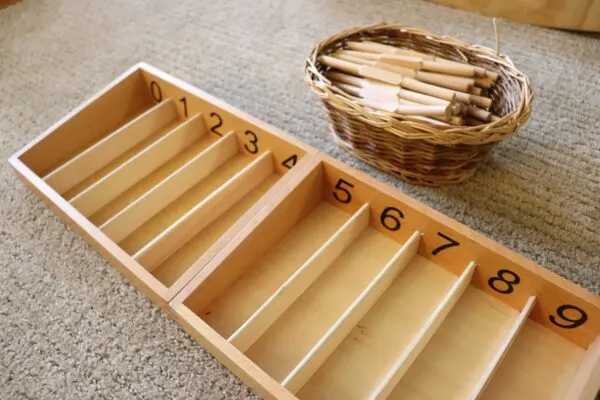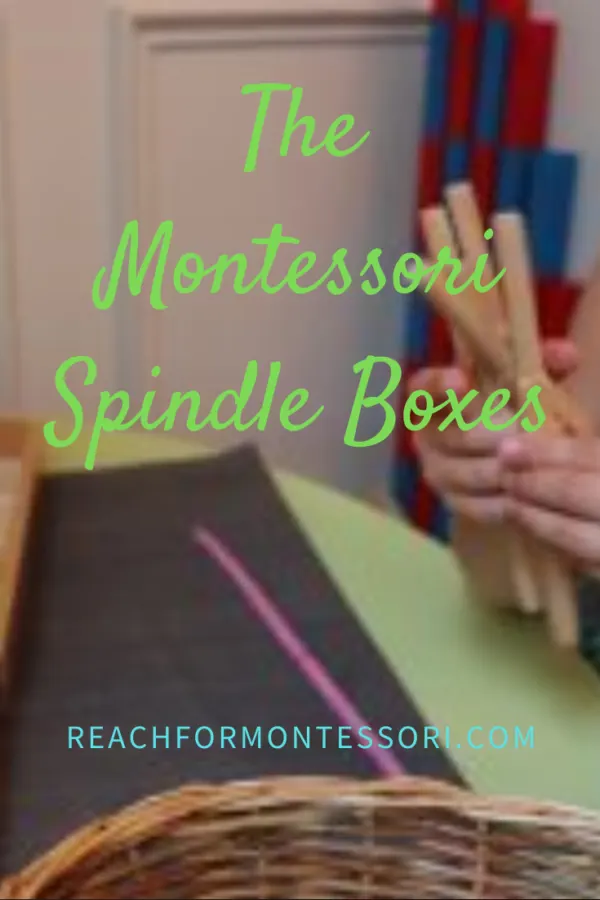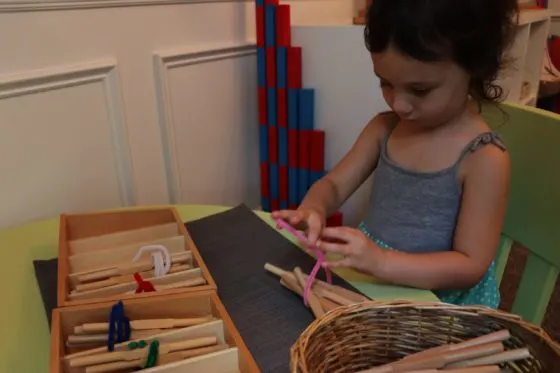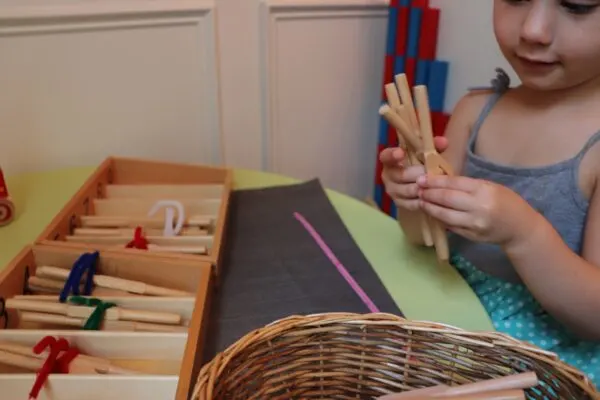If you're interested in learning about the Montessori Spindle Boxes, you're in the right place.
I absolutely love this material and my children all enjoy it so much.
In this post, you'll learn a bit about this simple, but wonderful Montessori math material.
I'll show you how to present the Montessori Spindle Boxes lesson, as well.
So, let's get right to it.

What are the Montessori Spindle Boxes?
Every material designed by Dr. Montessori had the child's work with their hands in mind.
Dr. Montessori believed that the child who has the chance to use her hands in learning has the chance to attain a superior level of character and intelligence.
For this reason, the materials were designed to fit in a small child's hands, allowing them to experience the presented concept more.
The materials actively engage the child's senses, including tactile, visual, muscular, kinesthetic, and baric (weight).
In Montessori math, The Spindle Boxes are no exception.

The Spindle Boxes material comes with 2 rectangular slotted and numbered boxes and a set of 45 wooden spindles.
With this activity, a child is tasked with placing the correct number of wooden spindles in each slot.
The slots are numbered 0-9, 0-4 in the first box and 5-9 in the second box.
You can find quality Spindle Boxes on Amazon from shops like Elite Montessori or Adena Montessori.
They are 2 reliable brands.
Montessori Spidle Boxes with 45 Spindles
- Two wooden boxes of five compartments each with the numerals 0-9…
- Purpose: Understand the 1-9 number, numbers, names corresponding…
- Purpose: Understand the concept of 0; perception is empty.
The Importance of the Spindle Boxes
The wooden spindles are introduced after the child has a solid understanding of the quantities 1-10 and recognizes the corresponding numeric symbols.
This activity is introduced prior to the Zero Game and is the child's introduction to the concept of zero.
The Spindle Boxes material reinforces a child's understanding of the relationship between written numbers and physical quantities.
This important math material also gives children a muscular impression of the quantities with which they work.
How you present Montessori Spindle Boxes
The initial step in presenting this Montessori activity is ensuring the child is familiar with the written numerals.
This is done by asking the child to name the numbers, in numerical order and at random.
The rest of the presentation is very straightforward and simply involves matching the number of spindles to the corresponding number slot.
Along with the spindles, you should include ribbons, elastics, or pipe cleaners to bind the spindles.
You can pick the binding materials based on your child's abilities.
For activities that can help your child's fine motor skills, check out my Pincer Grasp article and Melissa's Fine Motor Skills article!
Both are fun and informative.
Why bind the spindles?
Binding the quantities is an important step because it reinforces that the quantity that has been counted is a set.
When the activity is complete and all the quantities are bound, you may ask the child to make some observations about each bunch.
The child might pick up the bundle of eight and comment that it is heavier than the bundle of two.
Or they might comment on how much space the different quantities take up in their hands.
This is a fun activity and, after the initial presentation by the parent or teacher, can be done on the child's own.
This is because there is a built-in control of error; the total number of wooden spindles included in the set.
The child will be able to check their own work.
If they finish the activity and have extra spindles, they'll know that they've made an error somewhere along the way.
Likewise, if they fall short 1 or more spindles when they get to the “9” slot, they will immediately recognize that an error has been made.
The Spindle Boxes prepare for the decimal system
Another benefit to this activity is it gets the child ready for future work with the decimal system, as 9 is the limit of the units category. (You will notice 9 being the greatest number in several other Montessori activities.)
I will be writing in greater detail about how early Montessori math activities prepare the child for the decimal system in the near future.
My children enjoy this activity so much. I hope yours will, as well.
Cheers and don't forget to subscribe!




How Montessori Teaches Math — The Montessori-Minded Mom
Wednesday 6th of November 2019
[…] talked about the Golden Bead Material, the Spindle Boxes, and the Zero Game. Those articles gloss over how specific Montessori materials that are used to […]
What is Control of Error in Montessori? — The Montessori-Minded Mom
Sunday 27th of October 2019
[…] Madeline (3) working with the Spindle Boxes. […]
Sue Denym
Wednesday 9th of October 2019
I'm happy to know that's you are enjoying our site. Read more to learn more!
The Zero Game — Parenting with Purpose
Sunday 7th of July 2019
[…] This game reinforces the concept of zero, as introduced in the pre-requisite materials, such as the Spindle Boxes. […]